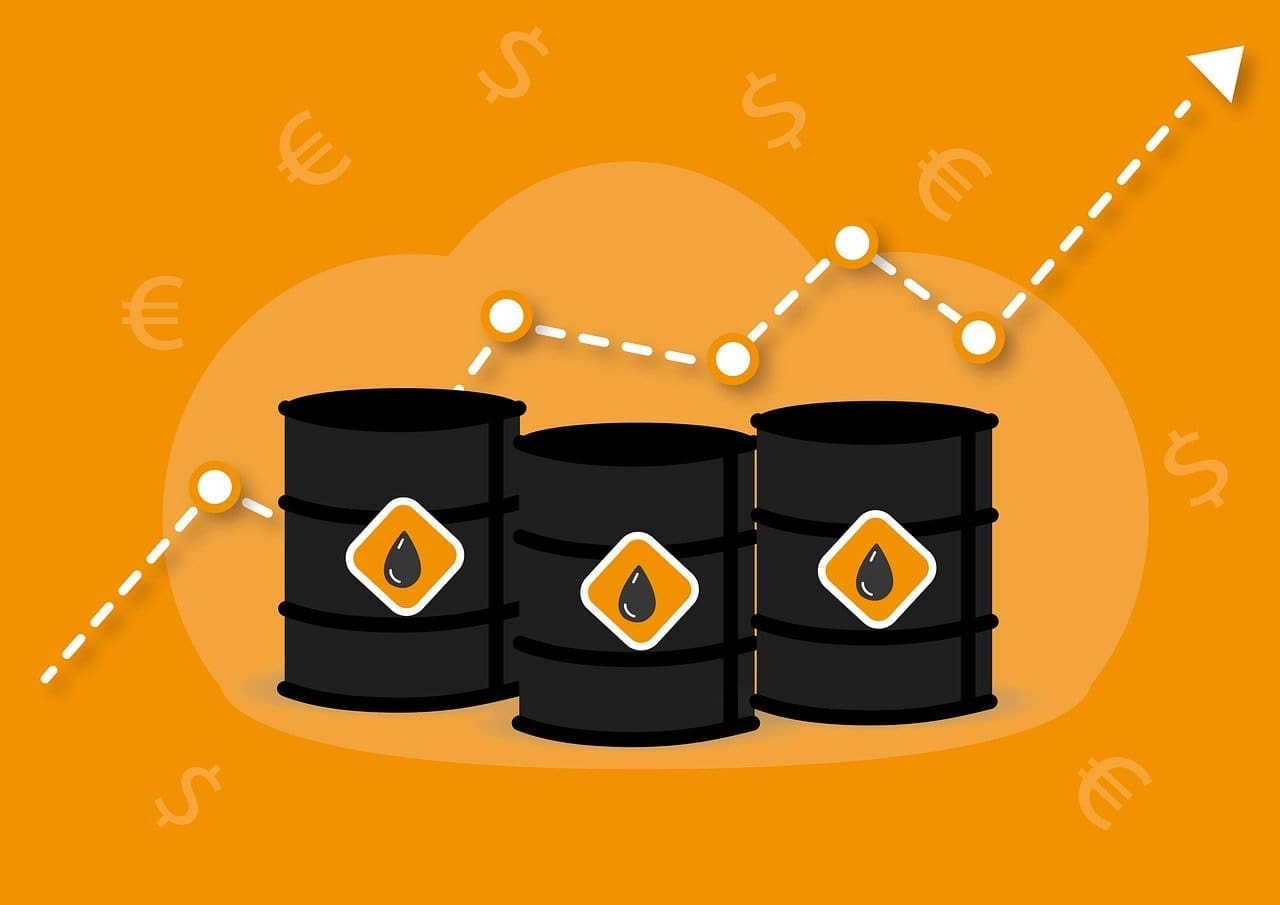The ever-fluctuating landscape of crude oil prices has captivated the attention of economists, analysts, and industry stakeholders worldwide. As the global economy navigates the intricate web of supply and demand dynamics, geopolitical tensions, and technological advancements, forecasting crude oil prices has become an intricate dance, requiring a keen eye for detail and a deep understanding of market forces.
Curtailing Expectations: Downward Revisions in Crude Oil Forecasts
In a world where volatility reigns supreme, economists and analysts have found themselves revising their oil price forecasts for 2024 downwards for the fourth consecutive month. The Reuters poll, a barometer of industry sentiment, now projects Brent Crude prices to average $82.86 per barrel this year, a notable decrease from the $83.66 per barrel anticipated in the July forecast. Similarly, the forecast for the U.S. benchmark, WTI Crude, has been adjusted downward to $78.82 per barrel in 2024, a departure from the previous projection of $79.22 per barrel.
The Tug-of-War: Bullish Drivers vs. Bearish Realities
While the ongoing OPEC+ production cuts and geopolitical flare-ups in the Middle East serve as bullish drivers, their impact is often overshadowed by the bearish realities of lackluster demand data and dwindling oil imports in economic powerhouses like China and Europe. This delicate balance between supply-side constraints and demand-side pressures has kept the crude oil market in a perpetual state of flux.
Slowing Chinese Demand: A Ripple Effect
China, the world’s second-largest oil consumer, has been at the epicenter of this demand conundrum. Weaker-than-expected economic growth, coupled with a slowdown in investment in the real estate and construction sectors, has dampened the nation’s thirst for diesel and crude oil. Consequently, analysts have tempered their expectations for China’s petroleum and liquid fuels consumption growth, projecting an increase of approximately 0.3 million barrels per day (bpd) in 2024 and 2025, significantly lower than the 2015-2019 average growth rate of 0.5 million bpd.
Inventory Overhang: A Looming Threat
As the peak summer demand season draws to a close, the specter of rising inventories looms large. Experts warn that slacker-than-expected consumption could lead to higher-than-anticipated inventory levels, exerting downward pressure on crude oil prices. This inventory overhang could further exacerbate the already volatile market conditions, underscoring the need for a delicate balancing act between supply and demand.
The OPEC+ Wildcard: Potential Production Ramp-Up
In a move that has sent ripples through the crude oil market, OPEC+ is reportedly considering ramping up production as early as October. This potential supply influx, if realized, could further weigh on oil prices, which have already been under pressure due to the outage in Libya, where an estimated 700,000 bpd, more than half of the country’s production, has been offline due to a political standoff between rival governments.
Financial Institutions Weigh In: Grim Forecasts and Strategic Moves
Prominent financial institutions have not shied away from voicing their concerns and projections regarding the crude oil market. Goldman Sachs, for instance, has lowered its expected range for Brent prices by $5 to $70-$85 per barrel, citing weaker Chinese oil demand, high inventories, and rising U.S. shale production. The banking giant’s analysts suggest that OPEC+ could decide to add supply to the market in a strategic move aimed at “disciplining non-OPEC supply.”
Echoing a similar sentiment, Citi has painted a grim picture, warning that if OPEC+ fails to implement more production cuts, we could see $60-per-barrel oil prices next year. Citi’s doomsday oil pricing scenario envisions a further plunge to $50 per barrel due to financial flows before a potential rebound. The bank’s analysts have expressed concerns that if OPEC refrains from extending output cuts beyond its current plan, the market could lose confidence in the cartel’s ability to defend oil at the $70 mark.
Non-OPEC Supply Surge: A Counterbalance to OPEC+ Cuts
While OPEC+ production cuts have been a key factor in influencing crude oil prices, the surge in non-OPEC supply has emerged as a counterbalancing force. Countries like the United States, Canada, Guyana, and Brazil are leading the charge, with the U.S. Energy Information Administration (EIA) forecasting a 1.8 million bpd increase in non-OPEC liquid fuels production in 2024, offsetting the 1.3 million bpd decline from OPEC+ countries.
The Shale Revolution: Unleashing U.S. Production
The shale revolution has been a game-changer for the U.S. oil industry, propelling the nation to the forefront of global production. According to the EIA, U.S. crude oil production is expected to reach 13.2 million bpd in 2024 and 13.7 million bpd in 2025, further solidifying the country’s position as a major player in the global oil market.
Canadian Resilience: Overcoming Wildfires and Pipeline Bottlenecks
Canada, another key non-OPEC producer, has demonstrated remarkable resilience in the face of adversity. Despite the temporary disruption caused by wildfires near production centers in Alberta, which took an estimated 0.2 million bpd of production offline in July, the ramp-up of the Trans Mountain Expansion pipeline has alleviated distribution bottlenecks and increased export capacity. Tanker tracking data reveals that many of these early volumes are flowing to the United States, a crucial consumer of Canadian crude oil.
Global Consumption Trends: Non-OECD Nations Drive Growth
While global liquid fuels consumption is projected to increase by 1.1 million bpd in 2024 and 1.6 million bpd in 2025, the EIA’s forecast for the latter has been revised downward by 0.2 million bpd from its previous estimate. This adjustment underscores the dynamic nature of the market and the need for continuous monitoring and recalibration.
Notably, the bulk of the anticipated liquid fuels demand growth is expected to originate from non-OECD countries, which are projected to increase their consumption by 1.1 million bpd in 2024 and 1.4 million bpd in 2025. This trend highlights the shifting global economic landscape and the increasing importance of emerging markets in shaping the crude oil demand narrative.
Geopolitical Tensions: Temporary Ripples or Lasting Impacts?
Geopolitical tensions have long been a source of volatility in the crude oil market, with headlines often triggering temporary price fluctuations. However, Citi’s analysts have observed a diminishing impact of these events, noting that each rebound is weaker than the previous one. The market, it seems, has become increasingly adept at distinguishing between geopolitical tensions and actual supply disruptions, viewing major headlines as opportunities to capitalize on short-term upswings rather than harbingers of lasting price shifts.
The Road Ahead: Navigating Uncertainty with Agility
As the crude oil market continues to navigate the uncharted waters of supply and demand dynamics, geopolitical tensions, and technological advancements, one thing remains clear: uncertainty is the only constant. To chart a successful course, industry stakeholders must embrace agility, continuously reassessing their strategies and adapting to the ever-evolving landscape.
Hedging Strategies: Mitigating Risk in Volatile Times
In the face of potential price drops, Citi has advised oil producers to hedge against such eventualities, underscoring the importance of risk mitigation strategies in volatile markets. By employing hedging techniques, producers can safeguard their interests and ensure a degree of stability amidst the turbulent tides of crude oil prices.
Capitalizing on Short-Term Opportunities: A Balancing Act
While long-term forecasts paint a complex picture, Citi’s recommendation to capitalize on short-term price increases by taking bearish positions highlights the need for a balanced approach. Striking the right equilibrium between capitalizing on fleeting opportunities and maintaining a strategic long-term vision is a delicate dance that requires careful consideration and prudent decision-making.
Conclusion: Embracing Adaptability in the Crude Oil Market
As the curtain falls on this exploration of crude oil price forecasts, one resounding theme emerges: adaptability. In a market where volatility reigns supreme, the ability to pivot and adjust strategies in response to shifting dynamics is paramount. By embracing a mindset of continuous learning and agility, industry stakeholders can navigate the choppy waters of the crude oil market, seizing opportunities and mitigating risks with equal fervor.
The road ahead may be paved with uncertainties, but those who possess the foresight to anticipate and prepare for the unexpected will be well-positioned to thrive in this ever-evolving landscape. As the tides of change continue to ebb and flow, the crude oil market remains a captivating arena, where fortunes are forged by those who can harness the power of adaptability and stay ahead of the curve.









